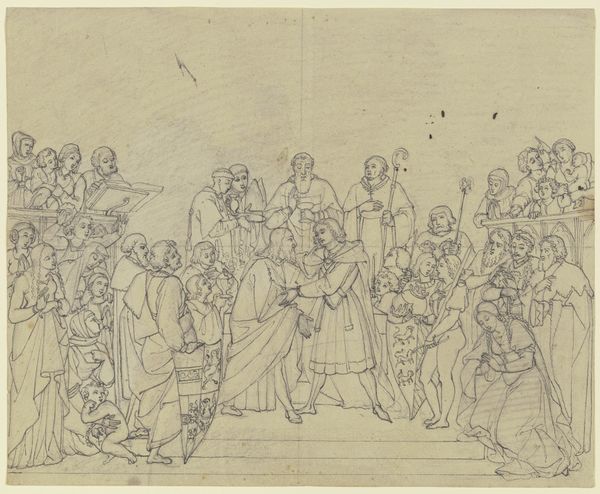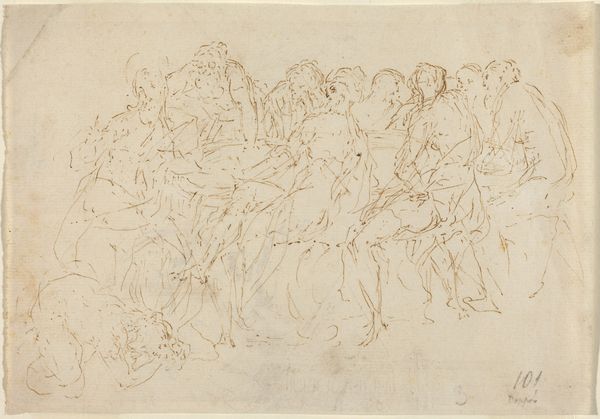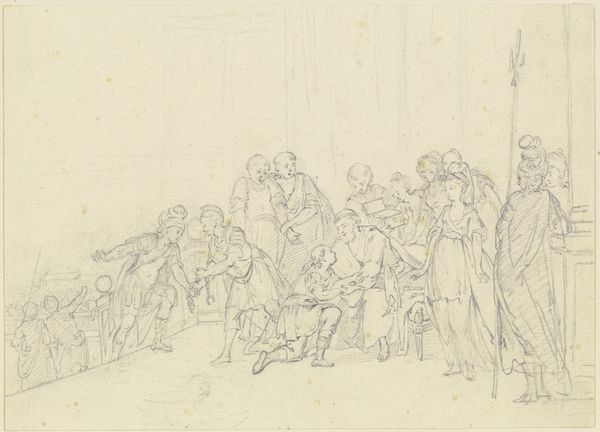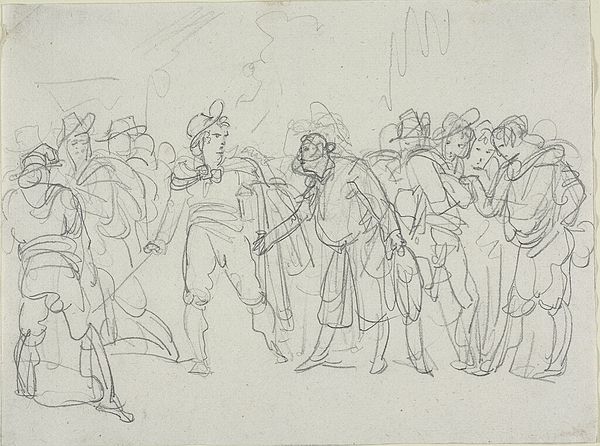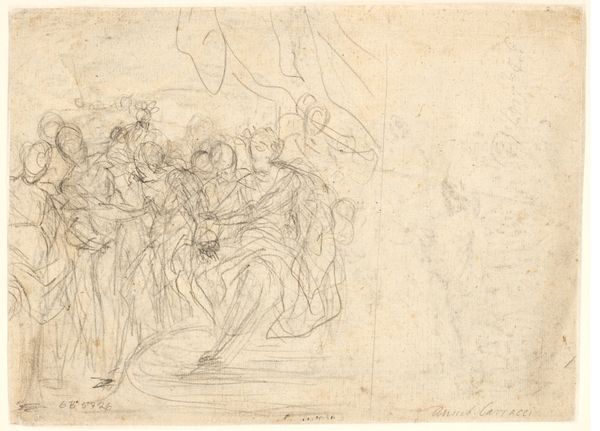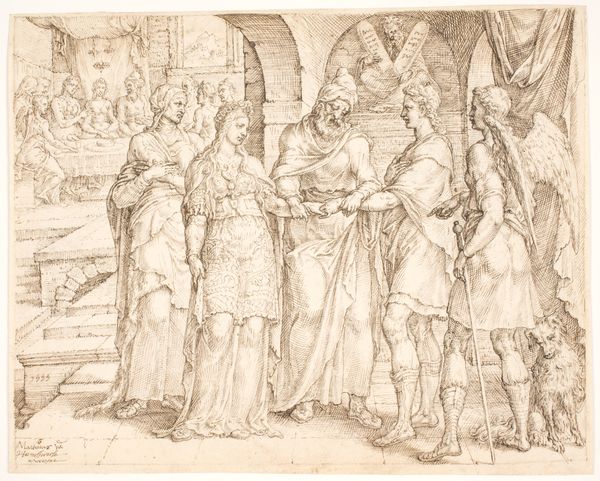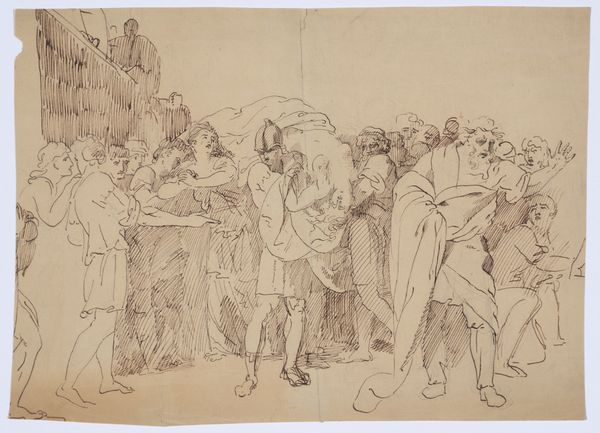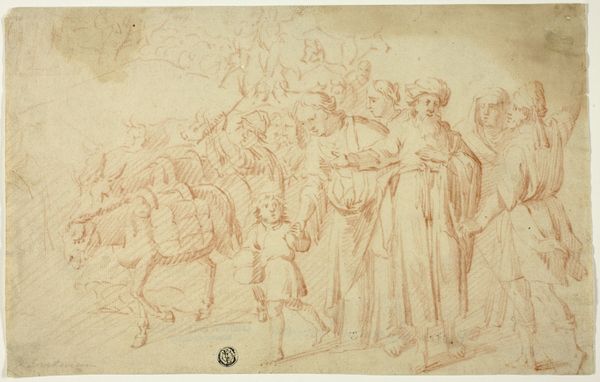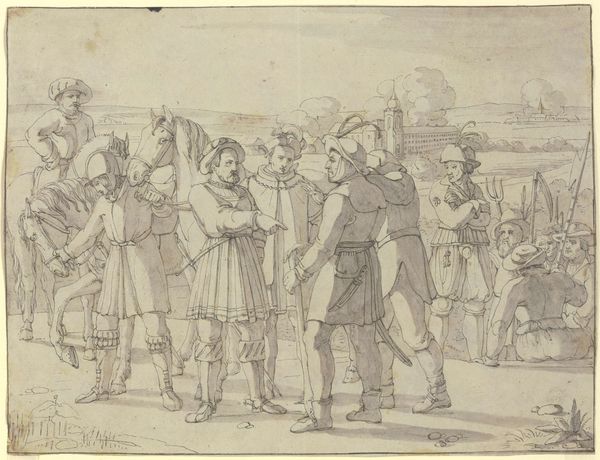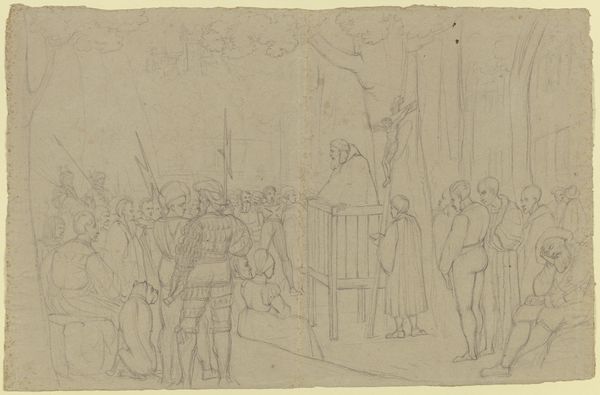
drawing, paper, pencil
#
drawing
#
narrative-art
#
pencil sketch
#
figuration
#
paper
#
pencil
#
history-painting
Copyright: Public Domain
Curator: Here we have Roger Fenton's pencil drawing on paper, created around 1855, entitled "Sebastopol, Graves of English officers." Editor: The first thing that strikes me is the starkness of the composition. A very linear narrative with precise detailing in the figures dominates this work, evoking a solemn procession. Curator: Absolutely. Observe Fenton's deliberate arrangement of figures within the frame. The linearity underscores a deliberate composition, reinforcing a theme of historical weightiness. He has paid meticulous attention to the costumes, almost as if inventorying rank. Editor: Thinking about Fenton's historical context as a pioneering war photographer is key. Pencil offered a portable medium, allowing him to create these records under adverse conditions. What does the use of the pencil imply here versus photographs? How do pencil strokes themselves inform its creation? Curator: Good questions. While photographs captured immediacy, drawing offered a degree of control and idealization for representing history. We might consider the historical convention here and see it almost as history painting. The crosshatching of his pencil lends a softness to a serious occasion, but also flattens the depth. Editor: It’s remarkable to consider that each precise line demanded direct physical interaction, a labor that reveals a complex tension between documenting the battlefield and crafting an artistic creation. Consider also the availability of photographic materials, photographic paper, in comparison to a pencil, during wartime. Curator: I would suggest his deliberate layering, building the tones almost sculpturally, achieves monumentality through tonal structure. There's a clear hierarchy: more emphasis on clothing and facial features than say the background, indicating a desire to focus on what these men represent. Editor: Indeed, contemplating the paper Fenton chose can tell us more about how artwork embodies historical contingency in its physical form, challenging us to investigate both labor and cultural expression intertwined. What are we really looking at: An artwork or an accounting? Curator: That interplay between history, labor and artistry reveals Fenton's fascinating exploration. Editor: Precisely, Fenton gives us cause to consider all the levels of artistic creation through available mediums, a complex perspective that transforms our reading of his pencil drawing.
Comments
No comments
Be the first to comment and join the conversation on the ultimate creative platform.
